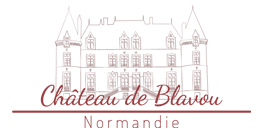History of Château de Blavou
The estate gets its name from the ancient Blavou Forest. In the Middle Ages, the owners took the title ‘Lords of Blavou’. In the 12th century, there was a small fort here, surrounded by a moat. References to the château are found in documents dating from the 16th century. At that time, the Lords of Blavou belonged to the Loysel or Loysail family and it was probably one of the members of this family who launched the construction (or reconstruction) of the oldest parts of the château during the 15th century. The old apartments, spiral stone staircase and vaulted cellars still exist; they are hidden within the château we see today. In 1655, Blavou passed to the Catinat family.
In 1713, Pierre de Catinat sold the estate to René de Vanssay. On the 1830 Land Register, the château is shaped like an “L”.
In the 1870s, major reconstruction work was commissioned by Antoine de Vanssay. Although the structure of Blavou seems identical to the original (with the same buttresses and basement floor with ribbed vaulting), the château was substantially rebuilt in the 19th century in the neo-Gothic style.
Two towers were added to the south-east and south-west corners of the building.
- In 1917, the château and estate were purchased by Louis Armand Henri Revert.
- In 1961, the Association de l’Aide à l’Enfance de Champthierry purchased it and turned it into a home for disabled children.
- In 1997, the château was sold to a private company.
- The next two owners ran it as a B&B and function venue until 2014.
- In 2015, Isabelle and Pascal Senèze purchased Château de Blavou to operate as a B&B with table d’hôte meals, 2 gites and a function room for weddings and seminars.
